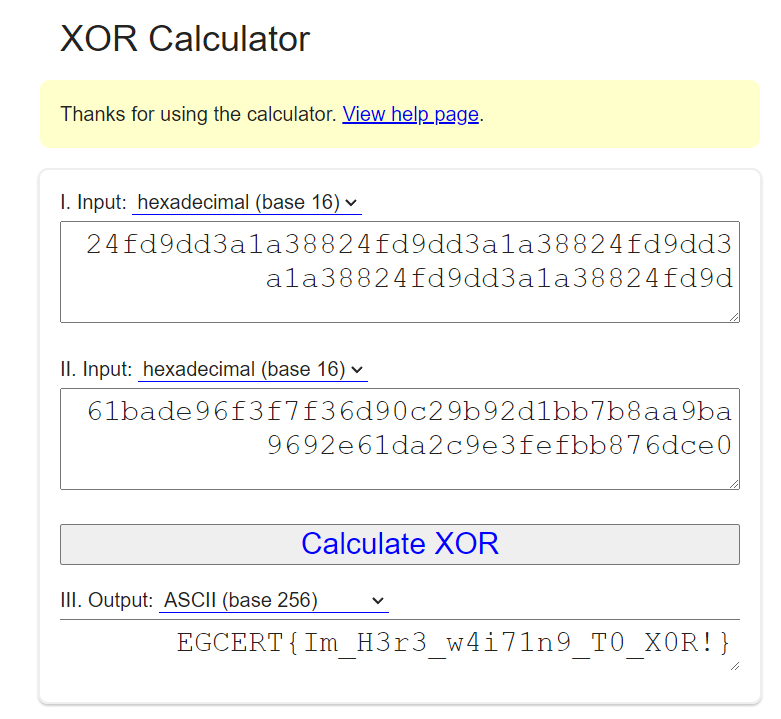In the realm of cryptography, the XOR cipher stands as a simple yet compelling enigma. To elucidate its workings, one might liken it to a locked diary; the diary itself may contain basic entries, but the key to decipher it is hidden within a seemingly random sequence of letters—a code that, when unraveled, reveals its secrets. This article endeavors to guide you through the intricate process of reversing an XOR cipher, illuminating each step with analytical precision.
The XOR cipher, or exclusive OR cipher, operates on a fundamental principle of boolean algebra, where two bits compare their values to yield an output. If both bits are identical (either 0 and 0 or 1 and 1), the output is 0; however, if they differ (0 and 1 or 1 and 0), the output is 1. This binary dance is intriguing; it transforms plaintext into ciphertext, and thus, the challenge lies in reversing this transformation.
To embark on the journey of reversing an XOR cipher, one must first comprehend the essentials—understanding the key. Much like a maestro orchestrating a symphony, the key governs the rhythm and sound of the cipher. The strength of the XOR cipher is bound to the intricacy of the key; a succinct key yields a predictable pattern, whereas an elongated, intricate key provides substantial security, enveloping the data in layers of complexity.
Reversal begins with the identification of the key. In many scenarios, especially within the cryptographic underworld, the keys may be known or even guessed based on established patterns. If the key is repetitive and short, analysis becomes remarkably tractable. Take, for instance, a scenario in which the key is ‘K’. By applying the XOR operation on each character of the ciphertext with ‘K’, the original plaintext is gradually unveiled.
Consider the structure of the XOR operation as a simple toggle switch; each application flips the corresponding bit of the cipher. If you visualize the cipher as an intricate mosaic, applying the reverse XOR operation piece by piece allows the hidden image to emerge. This tangible metaphor highlights the intuitive nature of XOR, making the seemingly abstract concept more relatable.
In the absence of a known key, the analytical puzzle intensifies. Cryptanalysts often resort to frequency analysis, a technique akin to deciphering a code by understanding common patterns. Natural languages exhibit certain frequencies in character occurrence. For instance, in English, ‘E’ often ranks as the most frequently used letter. By analyzing the frequency of characters within the ciphertext, one can deduce potential candidates for the key.
Once a probable key is hypothesized, the next phase involves a direct application of that key to the ciphertext. Each character of the ciphertext is nudged against the corresponding character of the key in a cyclical manner. This juxtaposition transforms the ciphertext back into clear text—like a sculptor chiseling away at marble, the true form begins to emerge.
Delving deeper, it is essential to recognize that ambiguity exists in the cipher as well. XORing with two different keys may yield the same output—hence the cryptographic community often embraces redundancy as a safeguard. This characteristic can present formidable challenges when multiple potential plaintexts arise from a single ciphertext. However, by utilizing context or additional information, one can often discern the intended message amidst the noise.
The cryptographic process too is reflective of a larger narrative, a metaphor for life’s complexities. Much like untangling a web of thoughts or emotions, reversing an XOR cipher requires patience and an analytical mindset. It compels one to probe beneath the surface, questioning every assumption in the quest for clarity.
Additionally, consider the appeal of XOR in terms of its unparalleled efficiency. In digital communication, where speed and accuracy are paramount, the XOR cipher excels. Its rapid execution renders it an attractive option for applications requiring lightweight encryption. This burgeoning utility across diverse fields, such as networking protocols and encoding mechanisms, highlights the relevance of mastering XOR techniques.
In summary, to reverse an XOR cipher is to engage in a cerebral dance with numbers and characters. It is a delicate balancing act of skill and intuition. By understanding the key, employing frequency analysis, hypothesizing potential plaintexts, and applying analytical rigor, the complex layers of the cipher yield to reveal their secrets. The challenge may appear daunting, yet therein lies the allure; each unlocked mystery not only conveys information but also enriches the understanding of cryptographic art—the very essence of security in the digital age.
Ultimately, the act of deciphering an XOR cipher parallels life’s endeavor to understand and connect the dots. It embodies a quest for transparency amidst the labyrinth of encryption. As cryptographic skills refine over time, they nurture intellectual resilience, a vital attribute in an ever-evolving technological landscape.








Leave a Comment